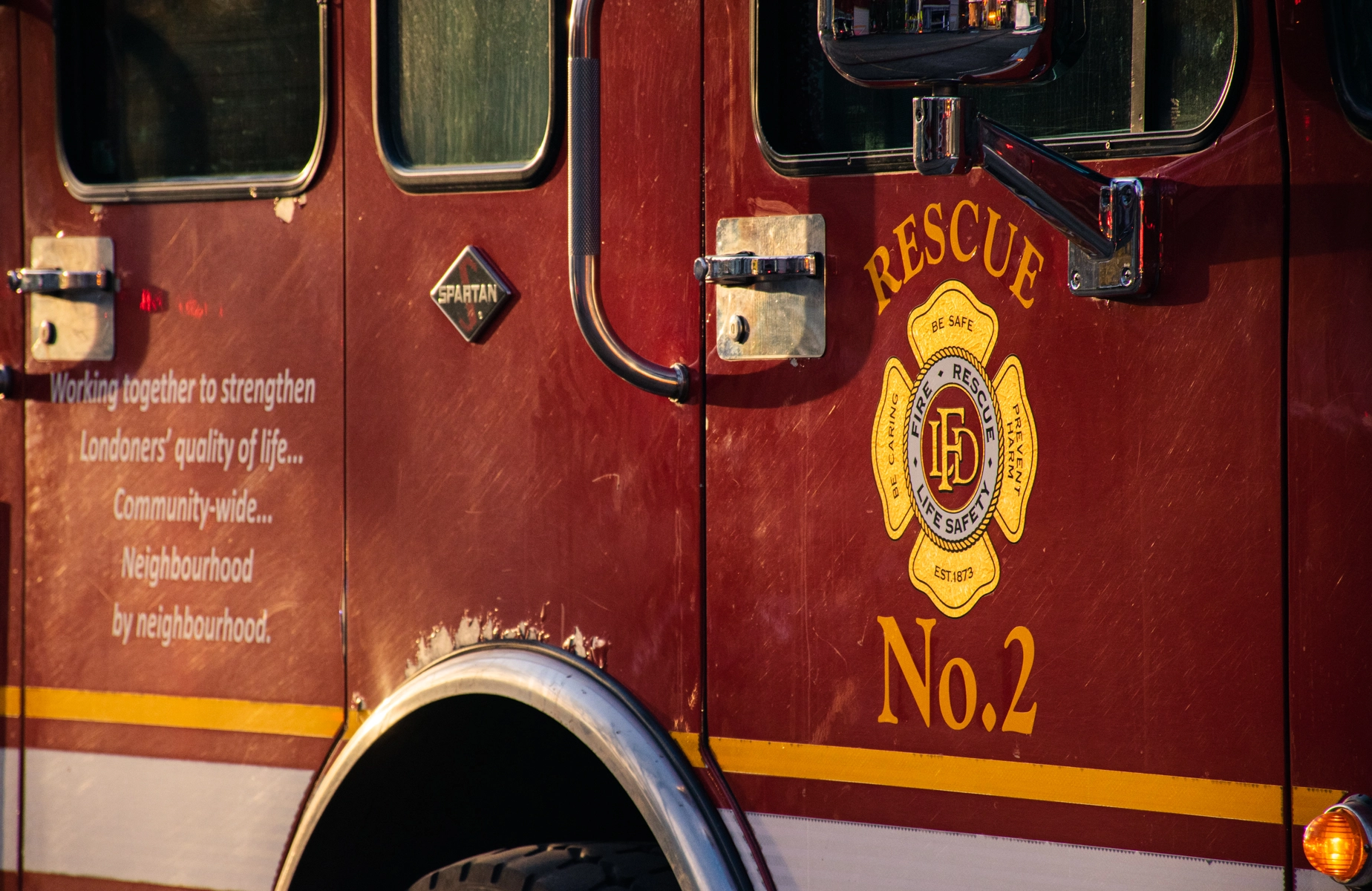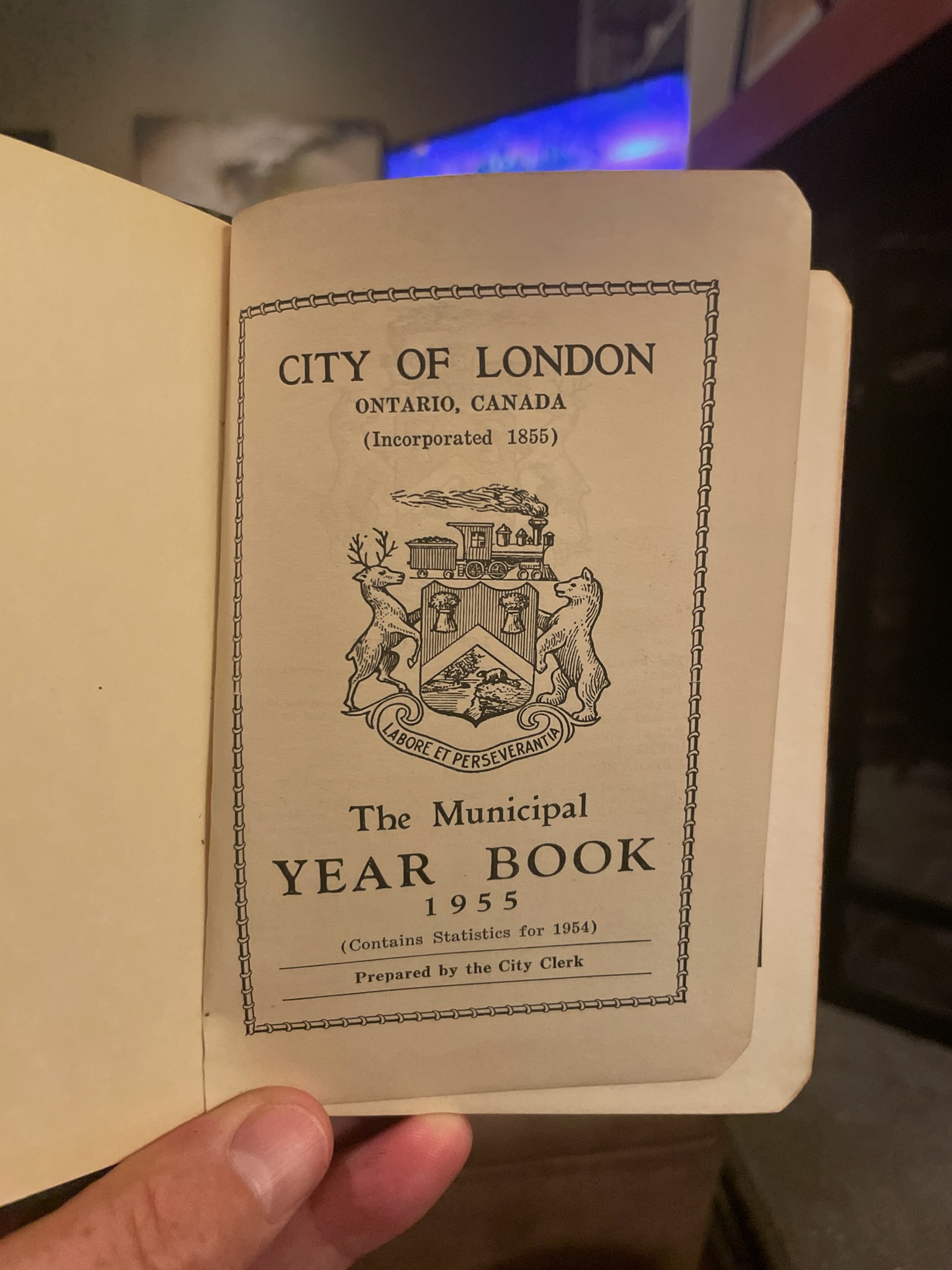By Matthew Trevithick | Global News
London Fire Department unveils new 10-year master plan as crews tend to rising service calls

FILE - A London Fire Department truck on Nov. 14, 2020. Matthew Trevithick/980 CFPL
The number of service calls received by the London Fire Department (LFD) has increased 22 per cent over the last six years, raising concerns that, without an expansion of resources, the department “will be challenged to meet this continued growth,” in the face of a rising population and a rising city skyline.
The message comes in the department’s new 10-year master plan set to be presented to a city committee next week, outlining the LFD’s “overall vision, direction and guidance,” to meet the growing needs of the city between now and 2032, a time during which the city’s population is expected to grow by tens of thousands.
“We are seeing an increased number in service calls and part of that is due to the fact that we’re one of the fastest growing cities in southern Ontario … We’re also seeing interesting growth patterns, some of them are are spoken to as ‘inward and upward,’ which can can bring challenges to us as well,” said London Fire Chief Lori Hamer, referencing the city’s official planning framework.
“The exciting thing about this plan for me is that it’s a living document, so it’s evidence-based and community risk-driven, but it also allows us to review and report back annually on what we see.”
According to the master plan, the department received 11,165 calls for service in 2021, an increase of 22 per cent from the 9,177 calls seen in 2016. (London’s population grew by 10 per cent over that time period according to census data.)
The increase is being seen in the number of emergency calls being dealt with by fire officials, which alone have risen 39 per cent since 2016. In comparison, non-emergency calls have decreased by 22 per cent.
At least 26 per cent of all calls were for fire alarm activations, while 23 per cent were for medical calls, and 13 per cent were for rescues, figures show.
“We are seeing a bit more of an increase in motor vehicle collisions. I think that is, in part, to do with the fact that we are seeing a population increase. Structure fires, we’re seeing a bit of an increase, but justifiable with what we’re seeing as far as population growth,” Hamer said.
At least 223 structure fires were tended to by fire crews over the course of 2021, of which the vast majority, 76 per cent, were residential fires. At least 54 per cent of all structure fires were the result of unintentional causes, while 16 per cent were intentionally set. The cause of at least 32 per cent of fires was undetermined.
The ignition source in 46 per cent of all structure fires was undetermined, while 20 per cent had cooking equipment as their ignition source, and 13 per cent open flame.
“I think it does speak to the fact that our community fire prevention strategies are working and that we’re getting out there and telling people kitchen fires are the number one fire that we’re seeing right now,” Hamer said.
“Getting education out about that and having our fire prevention inspectors out in the community to help with public education … I think we’ve seen a big shift in statistics because of the work that fire prevention does.”
Despite the rise in service calls, figures show department response times — when fire department dispatch is notified to when crews arrive — only rose about three per cent in that time. According to the report, the 90th percentile response time in 2021 was six minutes and 16 seconds.
Fire Station 1, located at Colborne and Horton streets, responded to the most primary calls last year, 2,192, followed by Station 2 on Florence Street east of Egerton Street with 1,208. The station which saw the fewest primary calls was Station 12 in Byron with 311. The figure does not include support calls to assist other stations.
The report notes the increasing number of calls for service involving aerial units over the years — 3,454 in 2021 compared to 3,012 in 2017 — something the department has attributed to the growing number of highrise buildings constructed to accommodate the city’s rising population.
Fire officials estimate that over the next 10 years, an additional 15,000 people will be living in highrise multi-residential structures in the city. Adding to that challenge is the fact that there are more highrise buildings being built in areas outside of the downtown core.
“The distribution of fire apparatus throughout the city must be considered to ensure that elevated (aerial) trucks can respond quickly and efficiently to high-rise buildings,” the report states.
Hamer says the department has been monitoring this challenge for the last several years, and says plans have been approved for an additional aerial company in the city to be stationed at the planned Fire Station 15, to be constructed at Hamilton and Old Victoria roads.
Other ongoing challenges facing the department over the next decade, she says, concern the city’s large student population and the two freight railways which cut through the centre of the city.
“We’re working with our fire prevention division very closely to make sure that we get education and training out to students who come into London,” Hamer said, adding that the department also continues to partner with CN and CP Rail “to provide training to be able to deal with emergencies if they should happen within the City of London.”
The plan outlines 22 objectives to be met over the next decade, focused on fire safety education, fire safety standards and enforcement, emergency response, staff and personnel development, and department strategic priorities.
Several of the objectives are already underway, Hamer says, including:
Having fire department personnel take part in fire prevention and public education efforts whenever possible,
Working with other partner agencies, like Middlesex-London Paramedic Services, to reduce dispatch response times,
Forming a committee to make recommendations to department brass regarding deployment and station assignments of specialty and technical rescue teams,
Continuing to use the department’s current training facility resources while working to “enhance the use and possible revenue generation of the facility,” while also developing a business plan for a new facility, and Developing and implementing a “total wellness strategy” to ensure department member mental and physical well-being.
“It’s an exciting plan because we’ve gone a little bit outside the box in that we’ve added an entire section to staff and personal development as we work towards basically a total wellness strategy for our staff,” Hamer said.
“For me it’s just a really important piece as we see the fire service evolve, that we continue to evolve with it and that mental health and resiliency piece is just so important.”
The department’s 2022 master plan will be presented to next week’s meeting of the Community and Protective Services Committee. It can be read in full here.
Source: GlobalNews.ca

